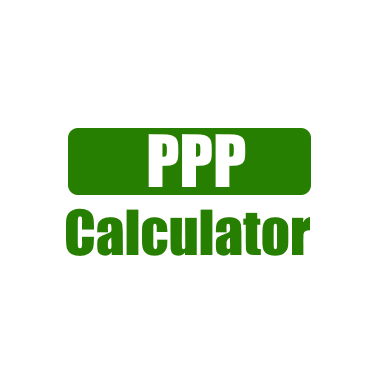
Key Variables in a PPP Calculator
Key Variables in a PPP Calculator
The Key Variables in a PPP Calculator Public-Private Organizations (PPPs) have arisen as a vital instrument for supporting and conveying public framework and administrations. They empower state run administrations to use private area aptitude and assets, cultivating development and proficiency. Notwithstanding, the outcome of these organizations relies on fastidious preparation and assessment, which is where the PPP number cruncher turns into a basic apparatus. This article digs into the critical factors inside a PPP number cruncher, inspecting how they impact project results and dynamic cycles.
The Types of Key Variables in a PPP Calculator
1. Cost variables in Key Variables in a PPP Calculator
Cost factors are essential to any PPP project examination. They incorporate a scope of costs that can essentially influence the monetary plausibility of an organization.
Introductory Venture Expenses
Introductory venture costs allude to the forthright capital expected to launch an undertaking. This incorporates land procurement, development costs, hardware buys, and some other consumptions brought about before the venture becomes functional. Exact assessment of these expenses is fundamental, as they structure the reason for supporting courses of action and generally speaking undertaking achievability. Assuming introductory expenses are misjudged, it could prompt monetary deficiencies, risking the venture’s prosperity.
Working and Support Expenses
When a PPP project is functional, progressing working and upkeep costs become an integral factor. These expenses incorporate staffing, utility costs, fixes, and routine support expected to keep the venture moving along as planned. Assessing these expenses precisely is basic, as they straightforwardly influence the task’s benefit over its life expectancy. High working expenses can disintegrate edges, making it basic for partners to foster an exhaustive comprehension of these costs.
Possibility Expenses
Possibility costs are held for unexpected costs that might emerge during the undertaking lifecycle. These could incorporate startling postponements, cost overwhelms, or changes in administrative necessities. Counting a possibility reserve in the monetary model is crucial for defend against likely dangers. A very much arranged possibility methodology guarantees that the venture can ingest shocks without risking its practicality.

2. Funding variables in Key Variables in a PPP Calculator
Funding factors are one more basic part of the PPP mini-computer. They direct the way in which the venture will be supported and the ramifications of different funding structures on generally speaking expenses.
Obligation Funding versus Value Funding
Projects frequently depend on a mix of obligation and value supporting. Obligation supporting includes acquiring reserves, regularly through credits or bonds, which should be reimbursed with interest over the long run. Value supporting, then again, includes raising capital by selling possession stakes in the task. The blend of these two supporting techniques influences the task’s capital design and chance profile. A higher extent of obligation can prompt expanded monetary influence yet in addition hoists the gamble of bankruptcy in unfavorable circumstances.
Loan fees
Loan fees essentially impact the expense of obligation supporting. Changes in market financing costs can significantly affect the general venture spending plan. Higher loan fees increment the expense of acquiring, which can prompt higher obligation administration installments and effect the venture’s income. Consequently, partners should consider current and projected loan costs while assessing funding choices.
Advance Terms and Reimbursement Timetables
The particular terms of credits, including length, reimbursement timetables, and amortization, assume a pivotal part in monetary displaying. Longer credit terms commonly bring about lower regularly scheduled installments, yet they can expand the all out interest paid over the existence of the advance. On the other hand, more limited credit terms might require higher installments yet lessen generally speaking interest costs. Adjusting these elements is fundamental to streamline income and guarantee the task’s monetary maintainability.
3. Revenue Variables
Income factors are major to evaluating the monetary reasonability of a PPP project. They incorporate different kinds of revenue that the task is supposed to produce.
Expected Income Streams
Income streams can incorporate costs, expenses for administrations, or other pay produced by the task. Understanding the arrangement of these income sources is basic for projecting income. Partners should cautiously investigate market interest, valuing methodologies, and cutthroat elements to foster practical income projections. Misjudging incomes can prompt monetary challenges down the line, while moderate appraisals might thwart project subsidizing.
Request Determining
Precise interest estimating is fundamental for expecting income age. Partners should consider factors like populace development, financial circumstances, and changing shopper ways of behaving. Strong interest models can assist with recognizing expected changes in utilization and income, empowering project organizers to come to informed conclusions about estimating and limit.
Income Development Presumptions
As well as assessing current incomes, partners should likewise project future income development. This includes presumptions about expansion, monetary development, and market patterns. Sensible development projections are essential for surveying the drawn out practicality of the task and guaranteeing that it can meet its monetary commitments over the long haul.
4. Financial variables
Monetary factors give setting to the undertaking’s monetary model, affecting the two expenses and incomes.
Expansion Rates
Expansion can disintegrate the buying influence of cash after some time, affecting the two expenses and incomes. While projecting future expenses and incomes, partners should represent expected expansion rates to guarantee that monetary models stay pertinent. Inability to consolidate expansion can prompt critical disparities in project practicality evaluations.
Markdown Rates
The markdown rate is a basic variable used to compute the current worth of future incomes. It mirrors the open door cost of capital and the apparent gamble of the speculation. Picking a suitable rebate rate is critical for precisely evaluating the net present worth (NPV) of the undertaking. A higher markdown rate demonstrates higher gamble and can fundamentally influence speculation engaging quality.
Financial Development Projections
Projections with respect to generally financial development can impact request gauges and income gauges. Solid monetary development might prompt expanded interest for administrations, while financial slumps can make the contrary difference. Partners should remain informed about macroeconomic patterns to make sensible suppositions about future execution.



